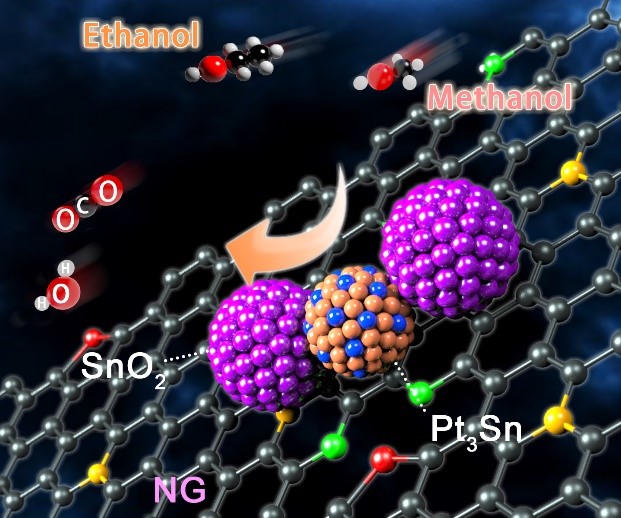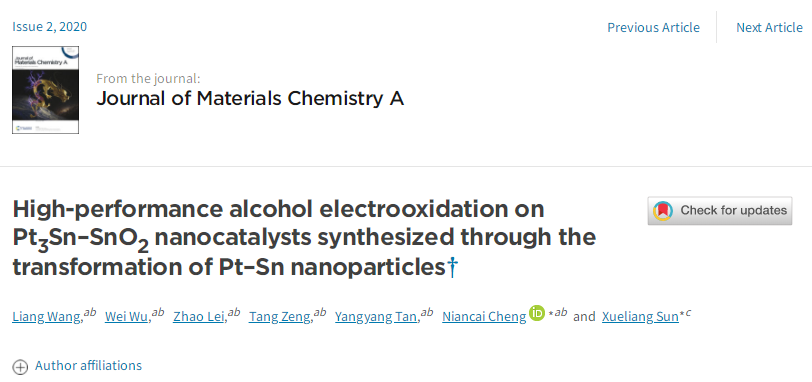Prof. Niancai Cheng Group at College of Materials Science and Engineering of Fuzhou University published a research article entitled “High-performance alcohol electrooxidation on Pt3Sn–SnO2 nanocatalysts synthesized through the transformation of Pt–Sn nanoparticles” in JMCA.
Platinum (Pt) nanoparticles have been widely used as efficient electrocatalyst for ethanol oxidation reaction (EOR) and methanol oxidation reaction (MOR) in DAFCs. The low activity, instability and CO-tolerance of Pt at the anode is the big challenge for the widespread commercial application of DAFCs technology. In this work, a facile approach is proposed to high active and stable Pt3Sn-SnO2 supported on N-doped graphene (NG) by in situ transformation of Pt-Sn/NG. The advantage of the in-situ transformation of Pt-Sn/NG to Pt3Sn-SnO2/NG not only induce the formation of ordered Pt3Sn NPs and SnO2, but also precisely control the contact between Pt3Sn and SnO2 to generate strong Pt3Sn-SnO2 interactions. Pt3Sn-SnO2/NG catalyst displayed excellent electrocatalytic activity and stability towards EOR and MOR. Pt3Sn-SnO2/NG catalyst also showed high CO-tolerance. The high activity and stability of the Pt3Sn–SnO2/NG catalyst can be attributed to the unique structure of Pt3Sn–SnO2, formed by the in situ transformation of Pt–Sn/NG, which induces the formation of a small-sized ordered Pt3Sn intermetallic that strongly interacts with SnO2. The synergetic effect between the ordered Pt3Sn and SnO2 enhances the activity towards EOR and MOR through the Sn in both Pt3Sn and SnO2, which facilitates the removal of COads on the adjacent Pt active sites at low potentials by providing OHads species; it also improves stability because of the strong Pt3Sn–SnO2 interactions.


Link: https://pubs.rsc.org/en/content/articlepdf/2020/ta/c9ta10886f